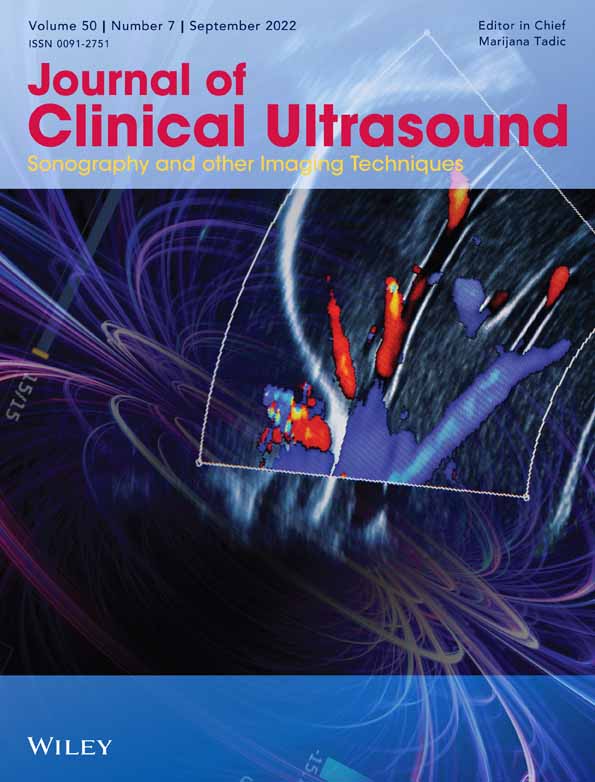Intravenous combined with intrabiliary contrast-enhanced ultrasound in the evaluation of resectability of hilar cholangiocarcinomas
Abstract
Objective
To investigate the application value of combined intravenous contrast-enhanced ultrasound (IV-CEUS) with intrabiliary contrast-enhanced ultrasound (IB-CEUS) in the preoperative evaluation of hilar cholangiocarcinoma (HCCA) resectability.
Methods
Clinical data from 82 patients with HCCA confirmed by surgery and pathology were retrospectively analyzed. Preoperative IV-CEUS + IB-CEUS and magnetic resonance cholangiopancreatography (MRCP) were performed and the results were compared with surgical and pathological findings.
Results
The accuracy of the Bismuth-Corlette classification confirmed by IV-CEUS + IB-CEUS and MRCP was 95.12% (78/82) and 87.8% (72/82), respectively. The diagnostic precision of IV-CEUS + IB-CEUS was better than MRCP (p = 0.001). The sensitivity, specificity, and precision of CEUS for diagnosing lymph node metastases (72.7%, 93.3%, and 87.8%), intrahepatic metastases (78.6%, 98.5%, and 93.9%), invasion of the hepatic artery (92.9%, 98.5%, and 97.6%) and invasion of the portal vein (93.8%, 98.5%, and 97.6%) of HCCA were, respectively. The consistency between the preoperative evaluation of resectability confirmed by IV-CEUS +IB-CEUS and MRCP was 85.4% (70/82) and 78.0% (64/82), respectively. In addition, the evaluations did not have statistically significant differences (p > 0.05). There were no significant differences between the two evaluations (p = 0.266).
Conclusion
IV-CEUS combined with IB-CEUS has significant value in classifying HCCA and evaluating the resectability of lymph node metastases, liver metastases, and vessel invasion.
CONFLICT OF INTEREST
All authors declared that no conflicts of interest in this study.
Open Research
DATA AVAILABILITY STATEMENT
All data generated and used are presented in this article.




